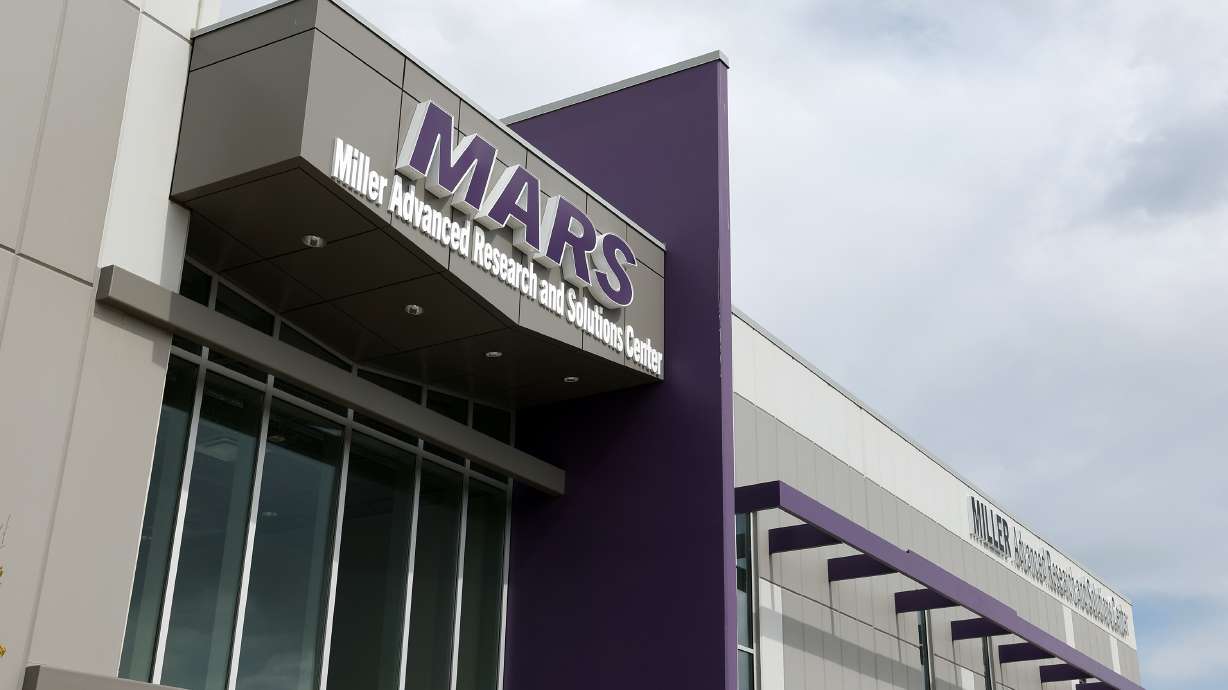Estimated read time: 3-4 minutes
This archived news story is available only for your personal, non-commercial use. Information in the story may be outdated or superseded by additional information. Reading or replaying the story in its archived form does not constitute a republication of the story.
CLEARFIELD — The Miller Advanced Research and Solutions Center at Weber State University has a new executive director and he has a "big vision" for how the center will play into the present and future of the aerospace and defense industries.
Benjamin Garcia is joining the center, also known as the MARS Center, after 20 years in the industry — mainly focused on research and development of advanced composite materials used for aircraft, missiles and rockets.
Garcia spent the last eight years at Northrop Grumman, where he recently managed a team of scientists and engineers in high-temperature composites — something that will be a focus of the center. Over the past decade, he has forged strong relationships with business and industry partners across the state and the U.S., said a Weber State release.
The MARS Center, located at the Falcon Hill Aerospace Research Park in Clearfield, will create opportunities for WSU students and faculty to research and apply innovative solutions to real-world problems in the realm of national defense and aerospace.
"Although I was really engaged with my job at Northrop Grumman and it was a very tough decision to leave ... I really thought of this as a chance to build something unique in the industry," Garcia said. "The MARS Center has a pretty big vision, and it's a unique center for the nation."
Garcia wants to harness his background and expertise to take things from the research stage to real-world production, as there's a "critical need" for high-temperature composites in the industry.
"We want to have advanced manufacturing equipment here to develop and push the state-of-the-art of high-temperature composites and have that be something that's available to all of industry and academia in Utah, as well as across the nation," Garcia said. "The key here is for it to be a hub of collaboration between industry and academia."
This constitutes providing relevant work for the student base but also encouraging faculty to direct their research efforts to issues important to aerospace and defense.
Garcia also sees the center as a workforce development tool for the industry, supplying more engineers and scientists to the region.
Utah Senate President Stuart Adams, R-Layton, described the MARS Center as "one-stop shopping to bring education together with employers, industry leaders and government" at the ribbon-cutting ceremony.

"What we're doing here is not only putting future employees together with academics, we're actually protecting our national security," Adams said at the opening of the center.
The center opened in August 2022 and was made possible through support from the Larry H. and Gail Miller Family Foundation and the Utah Legislature.
While the center will serve as a hub for some of the heaviest hitters in the aerospace and defense industries, Garcia said it will also benefit smaller businesses trying to market their technology to larger companies.
"They get these small business innovation research grants from the government to try to advance some of their capabilities and technologies ... and that's not enough to buy manufacturing equipment," Garcia said. "So they can demonstrate a lot of their technologies in the MARS Center and make it more marketable to the big defense contractors to actually adopt it and utilize it in their own systems."
Garcia said when he eventually looks back on his tenure as executive director of the MARS Center, he hopes the center will be nationally recognized by academia and industry partners.
"We want to push new technologies," Garcia said. "Utah needs this type of expertise, so it's a great opportunity not only for the industry to take part in this but also for our students. They're already doing unique testing on materials at extremely high temperatures potentially greater than 3,000 degrees Fahrenheit and speeds faster than Tom Cruise in the movie 'Maverick.'"









